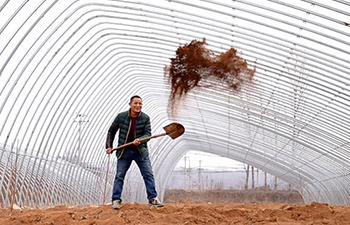
Staff members plant trees at the Saihanba forest in Weichang Man and Mongolian Autonomous County of Chengde City, north China's Hebei Province, May 13, 2014. Saihanba is a vast forest covering nearly 75,000 hectares. It was a piece of barren land 55 years ago, but decades of hard afforestation efforts turned it into an important ecological shield for Beijing and Tianjin. China has seen reduced desertification and increased forest coverage since 1978, thanks to the Three-North Afforestation Program (TNAP), said a report released on Dec. 24, 2018. Constructed in the northeast, north and northwest China, TNAP is a national program fighting against soil erosion and wind-sand damage by planting sand-fixing forests. The area of sand-fixing forests has increased by 154 percent in the past 40 years, contributing to the reduction of desertification by around 15 percent, according to a report jointly released by the National Forestry and Grassland Administration (NFGA) and the Chinese Academy of Sciences. Over the past 40 years, TNAP increased the forest area by 30.14 million hectares and raised the forest coverage rate from 5.05 percent to 13.57 percent in the regions it covers, said Liu Dongsheng, deputy head of the NFGA. (Xinhua/Wang Xiao)















